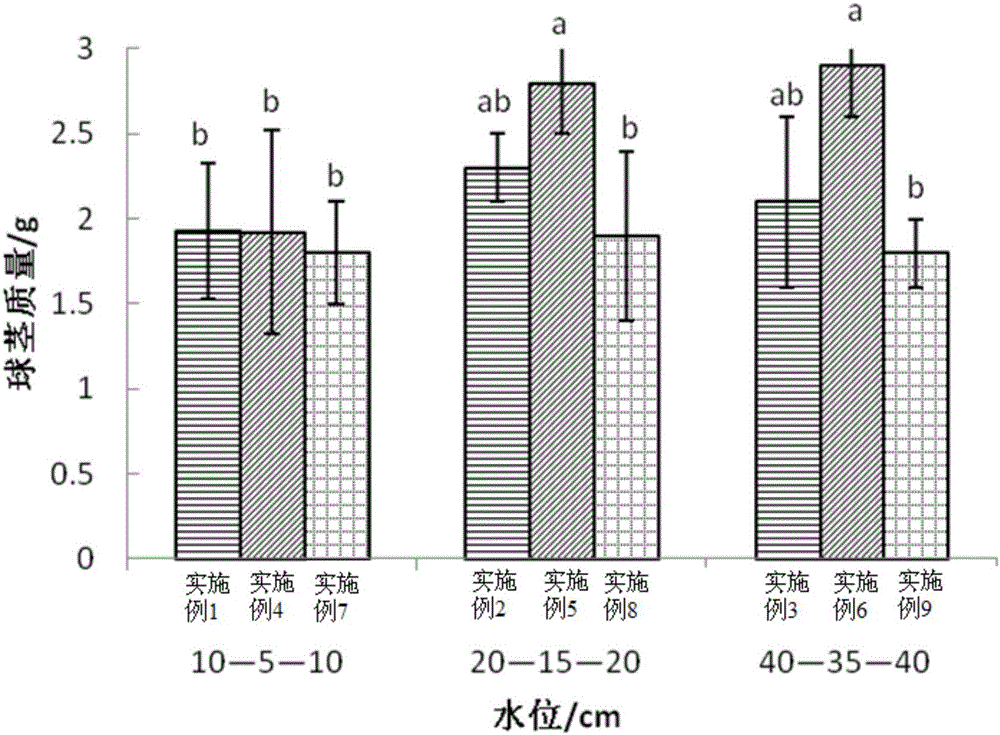Method for recovering three-river bulrush wet land from degeneration saline-alkali soil in west of Jilin
A technology of saline-alkali land and weed grass, which is applied in the field of ecological engineering, can solve the problems of low vegetation survival rate, slow recovery, and inability to recover, and achieve the effects of reducing costs, improving efficiency, and speeding up the process of vegetation recovery
- Summary
- Abstract
- Description
- Claims
- Application Information
AI Technical Summary
Problems solved by technology
Method used
Image
Examples
specific Embodiment approach 1
[0019] Specific implementation mode 1: This implementation mode is a method for restoring the degraded saline-alkali land in western Jilin to Sanjiang weed wetland, which is completed according to the following steps:
[0020] 1. Land consolidation: take the degraded saline-alkali land in western Jilin as the planting area, clear the weeds in the planting area, level the surface, and then inject water to keep the soil moisture saturated, and obtain the degraded saline-alkali land in western Jilin to be planted;
[0021] 2. Provenance collection: In the first ten days of April, in the distribution area of Momoge Sanjiang grass in western Jilin, we collected Sanjiang grass bulbs, kept them moist, and obtained the Sanjiang grass bulbs to be planted;
[0022] 3. Sowing: According to the buried depth of 2cm ~ 8cm and the sowing density of 50 / m 2 , plant the corms to be planted to be planted in step 2 obtained in step 1 in the degraded saline-alkali land in western Jilin to be pla...
specific Embodiment approach 2
[0026] Specific embodiment two: the difference between this embodiment and specific embodiment one is: in step 3, be 2cm and sowing density be 50 / m by buried depth 2 , plant the corms to be planted to be planted in step 2 obtained in step 1 in the degraded saline-alkali land in western Jilin to be planted in step 1, and it is required to complete the sowing within 5 days after the corms to be planted in step 2 to obtain Jilin after sowing Degraded saline-alkali land in the west. Others are the same as the first embodiment.
specific Embodiment approach 3
[0027] Specific embodiment three: the difference between this embodiment and specific embodiment one is: in step 3, be 4cm and sowing density be 50 / m by buried depth 2 , plant the corms to be planted to be planted in step 2 obtained in step 1 in the degraded saline-alkali land in western Jilin to be planted in step 1, and it is required to complete the sowing within 5 days after the corms to be planted in step 2 to obtain Jilin after sowing Degraded saline-alkali land in the west. Others are the same as the first embodiment.
PUM
 Login to View More
Login to View More Abstract
Description
Claims
Application Information
 Login to View More
Login to View More - R&D
- Intellectual Property
- Life Sciences
- Materials
- Tech Scout
- Unparalleled Data Quality
- Higher Quality Content
- 60% Fewer Hallucinations
Browse by: Latest US Patents, China's latest patents, Technical Efficacy Thesaurus, Application Domain, Technology Topic, Popular Technical Reports.
© 2025 PatSnap. All rights reserved.Legal|Privacy policy|Modern Slavery Act Transparency Statement|Sitemap|About US| Contact US: help@patsnap.com

